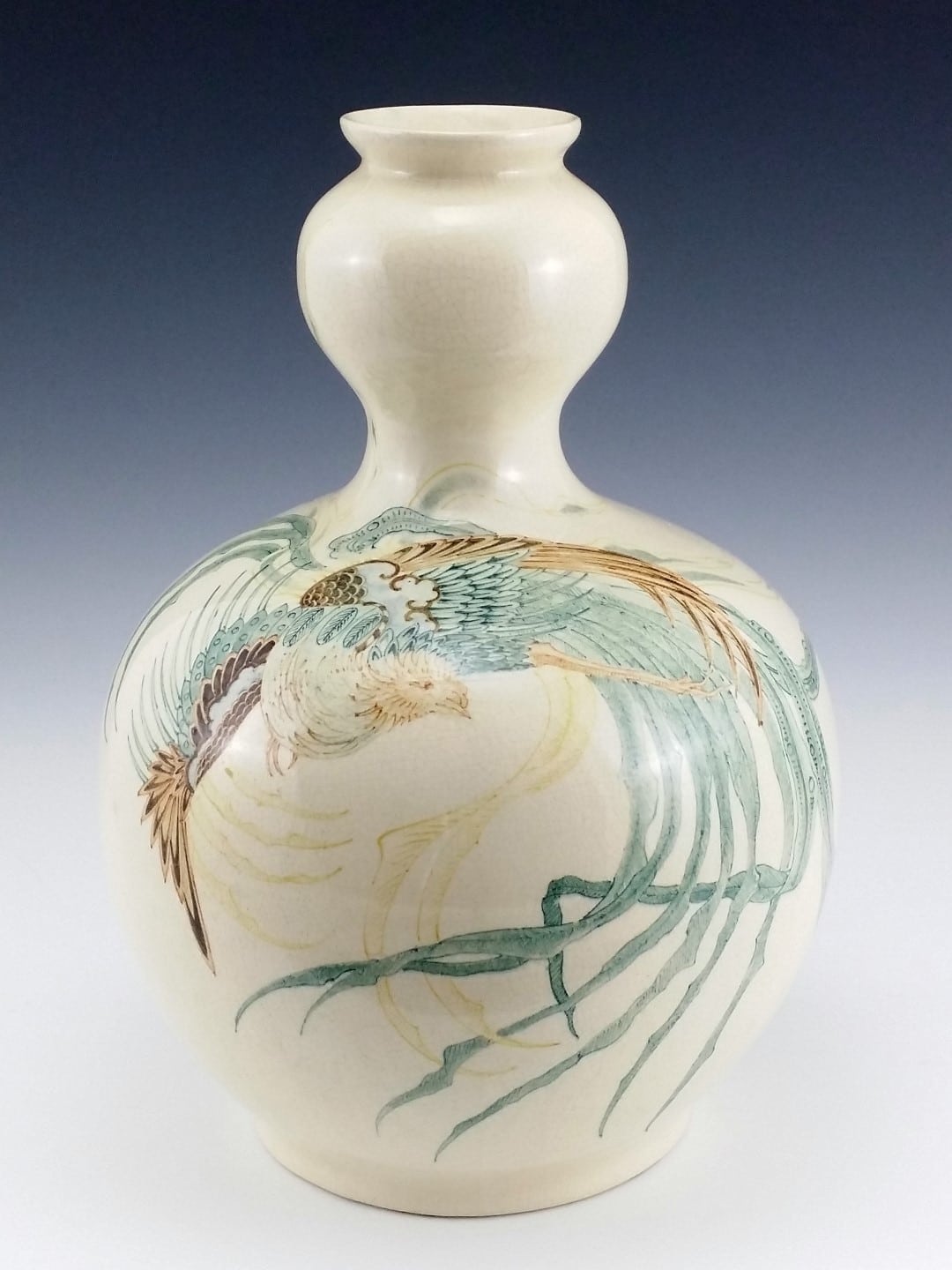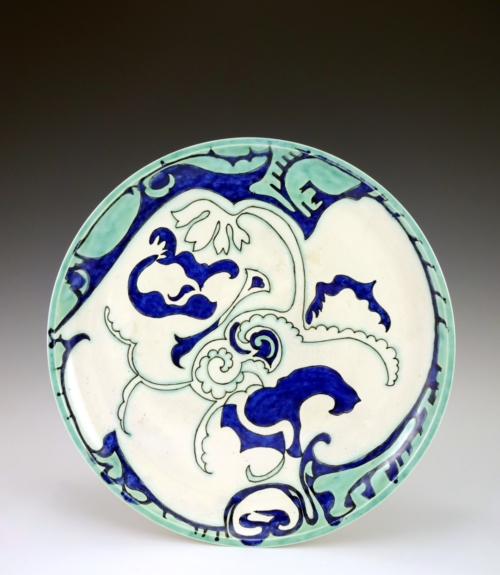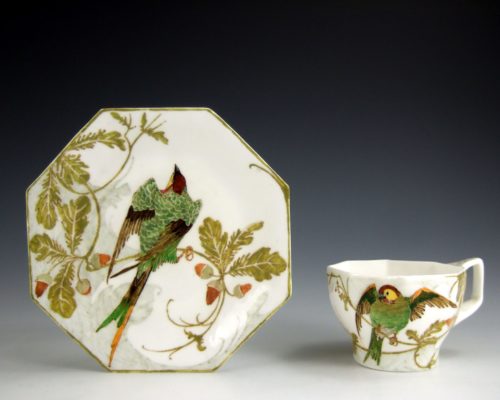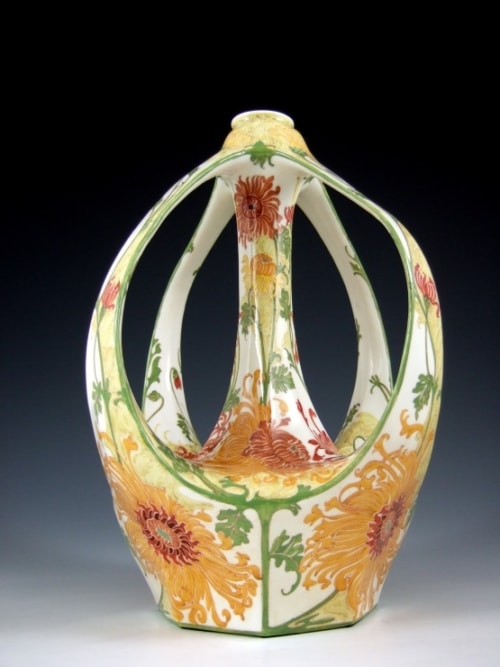Description
~Sold~
A rare Brantjes earthenware vase painted with a swirling bird-of-paradise on the front and poppies on the back of the vase. The design is by Chris Lanooy (1881-1948), who worked at the Zuid Holland factory a year before he went to work for Brantjes. He obviously had designed this decoration during his time at Zuid Holland. The Rijksmuseum has an (almost) identical vase, depicted in “Purmerend Jugendstil Aardewerk 1895-1907”, page 114 and in the Supplement on page 29. And also in “Art Nouveau in het Rijksmuseum”, page 129. See also: Rijksmuseum
Marked with the painted factory marks, model number 1117, dec. A and painters’ mark. High 29 cm.
The end of the 19th century saw a growing trade in goods and art between the West and Japan, and many artists became fascinated by the use of striking colors, motifs and perspectives in Japanese woodblock prints and ceramics. Chris Lanooy was also inspired by the Japanese style and this shows quite clearly in the designs he made for Zuid-Holland, Brantjes and Haga.
This rare Brantjes vase is Lanooy’s interpretation of the traditional kacho-e. It depicts a combination of a bird-of-paradise with several poppies. The style, which is mainly characterized by depictions of local birds and plants, was very popular with Western buyers. Rather than copying these prints, Lanooy’s design includes other Eastern influences as well, like depictions of the hou-ou or Japanese phoenix:
 (Isoda Koryusai 1735-1790 ‘Phoenix and Paulownia Tree’- MFA Boston)
(Isoda Koryusai 1735-1790 ‘Phoenix and Paulownia Tree’- MFA Boston)
Instead of portraying the bird sitting on a branch, as was customary in kacho-e, the dynamic way in which it curls around the shape of the vase is more reminiscent of Japanese vases portraying the hou-ou. Lanooy elaborates further on the mythical aspect of the décor by combining the bird with several poppies, which were used at the time as metaphors for both ‘eternal sleep’ and ‘imagination’, based on the hallucinatory properties of this plant. By portraying the poppies in several stages of their life cycle, Lanooy emphasizes the power of metamorphoses in nature to stimulate the imagination. This design seems to illustrate the idea of nature being more than meets the eye, and seeming to have a more beautiful, magical side to it.
(text & research: Lizzy Boel)




